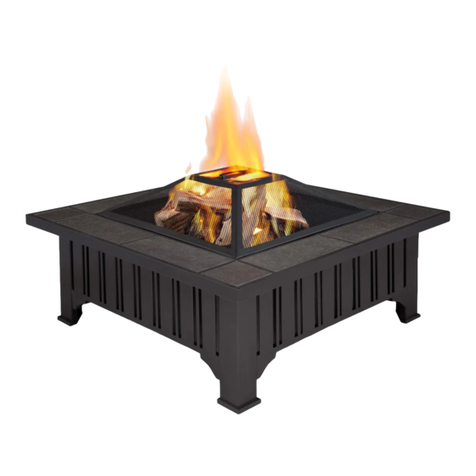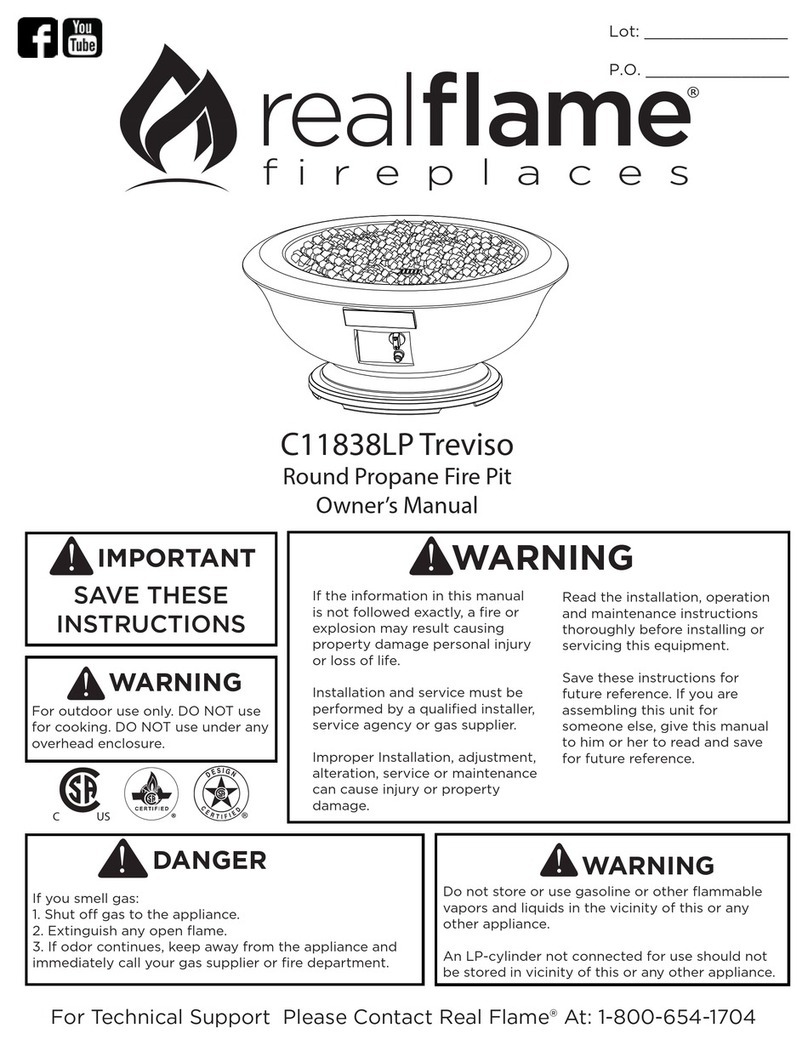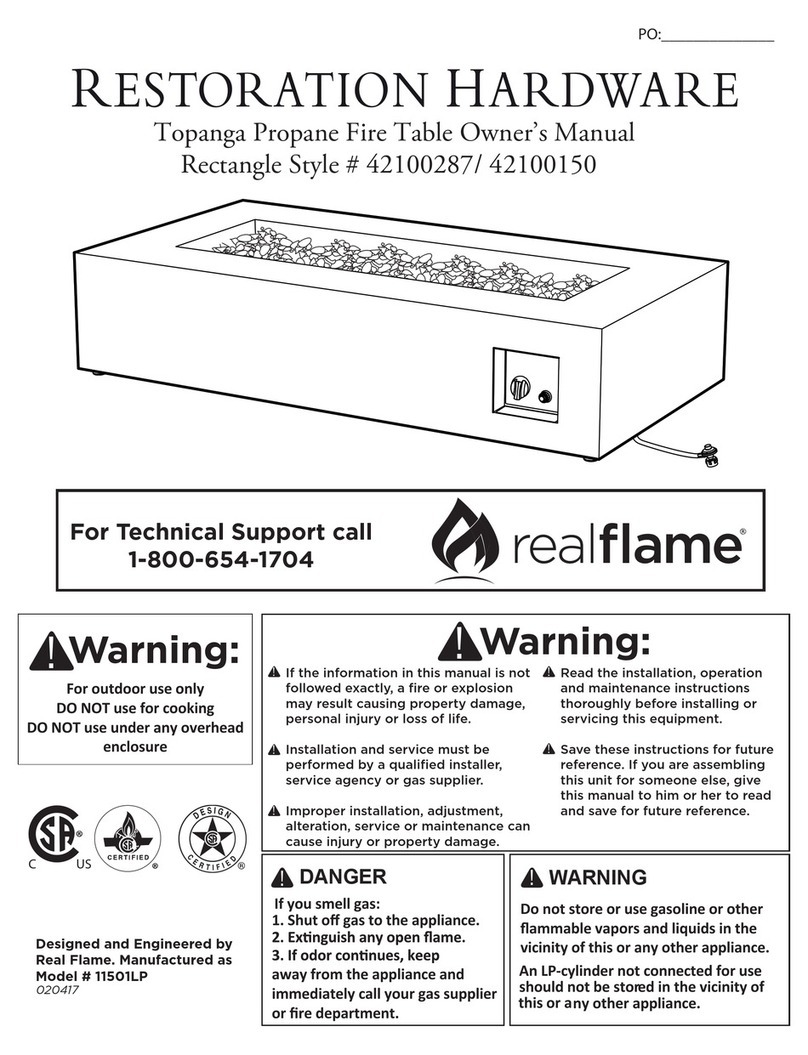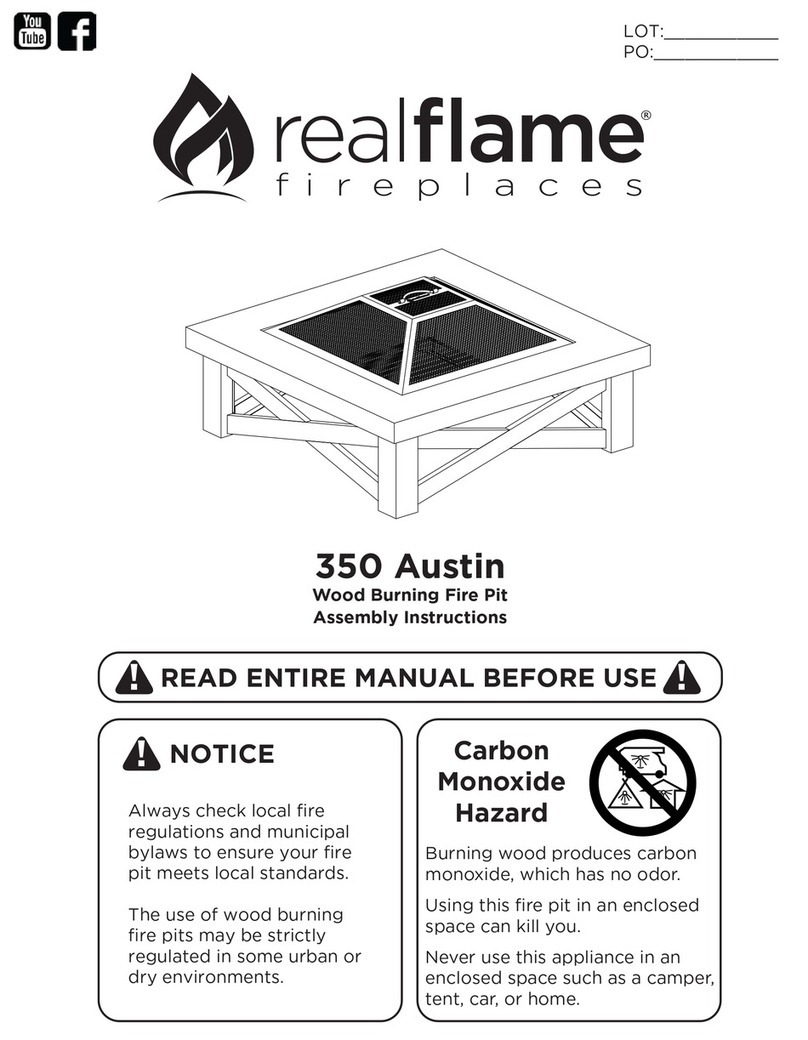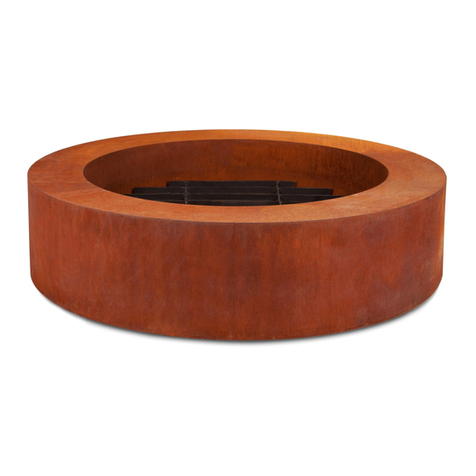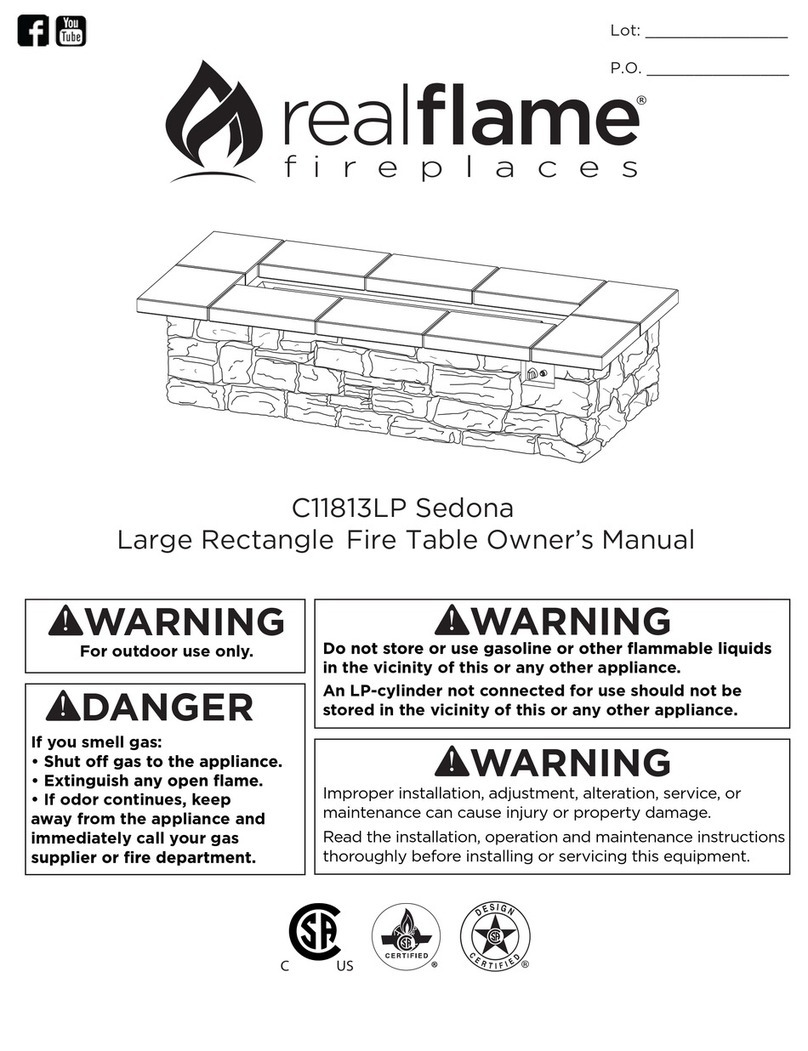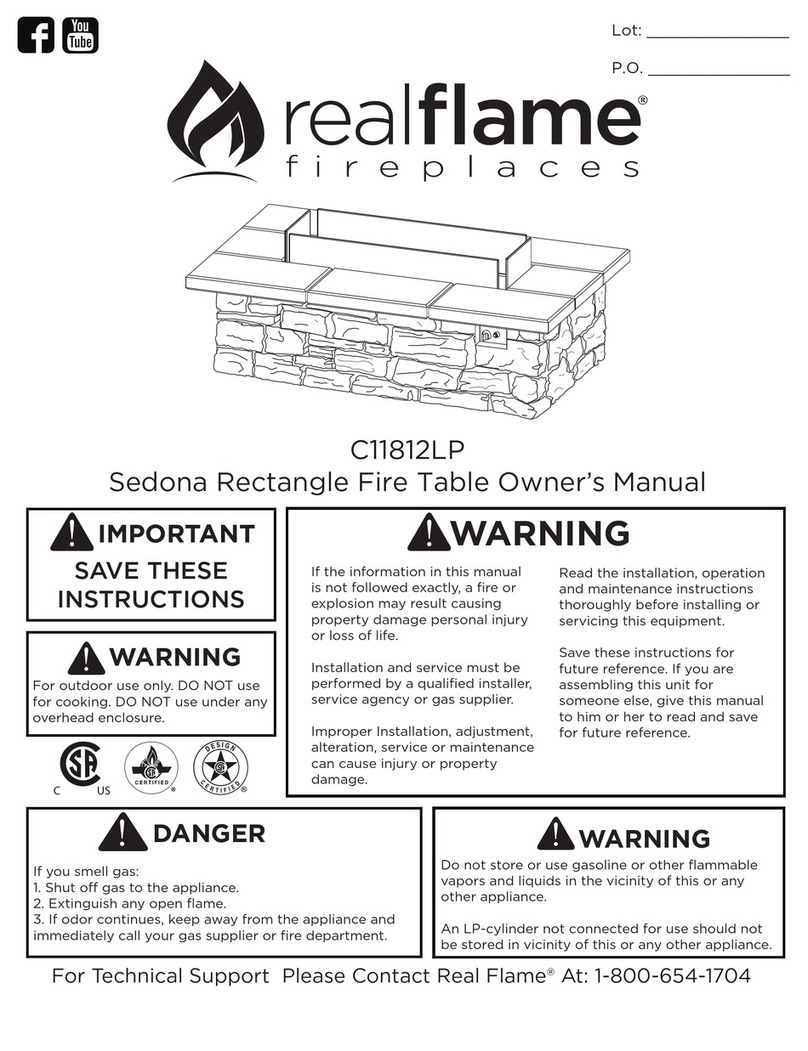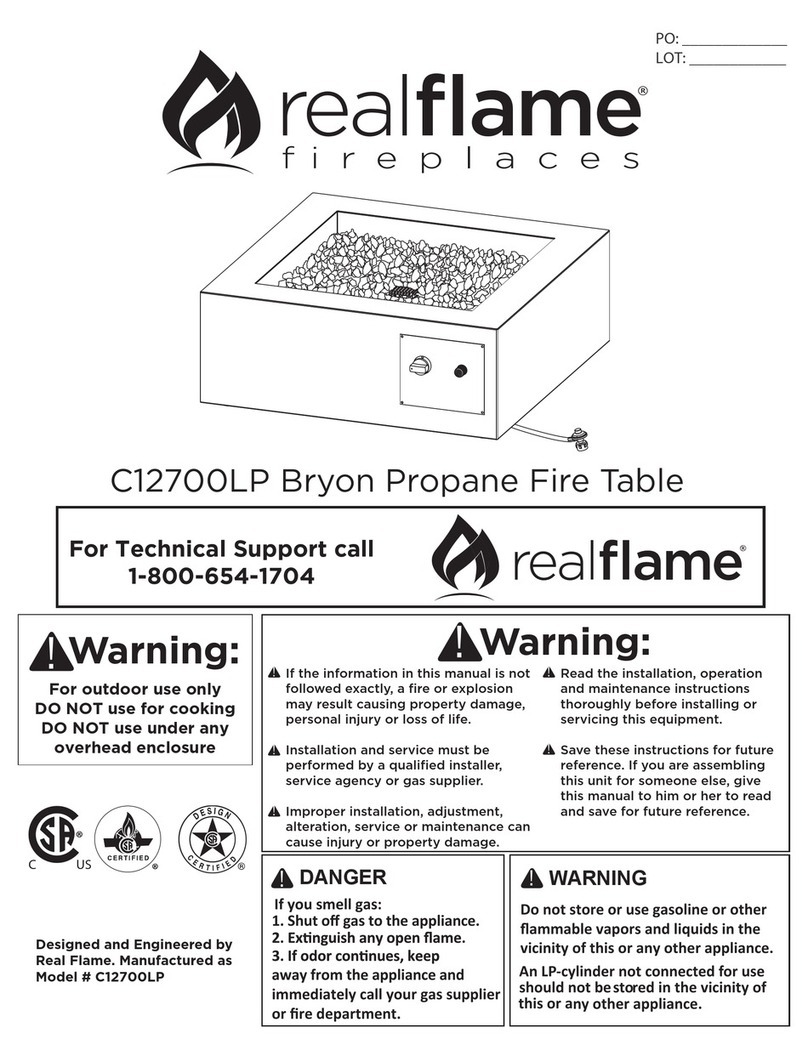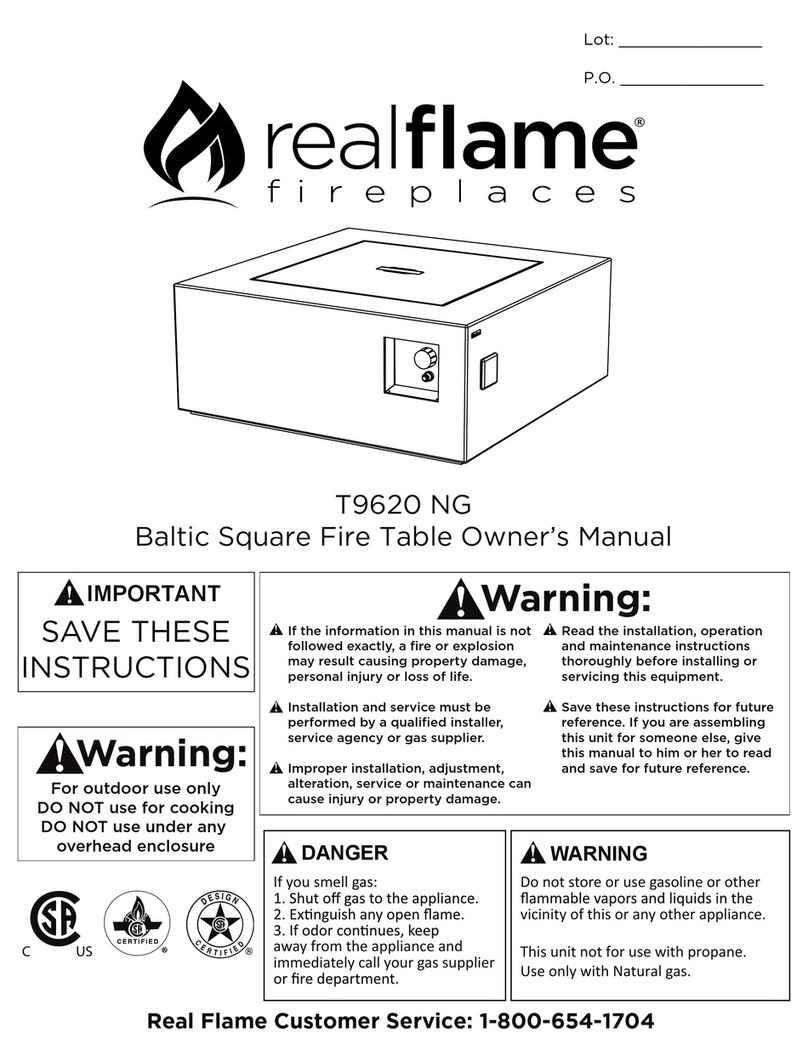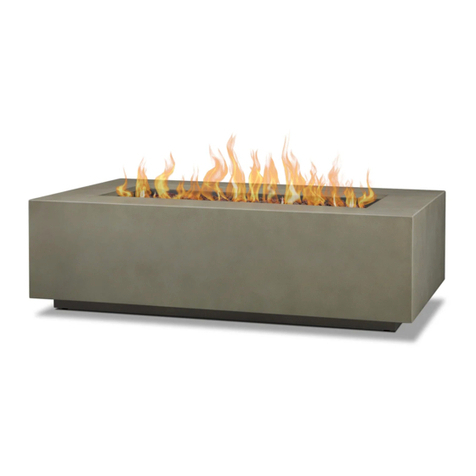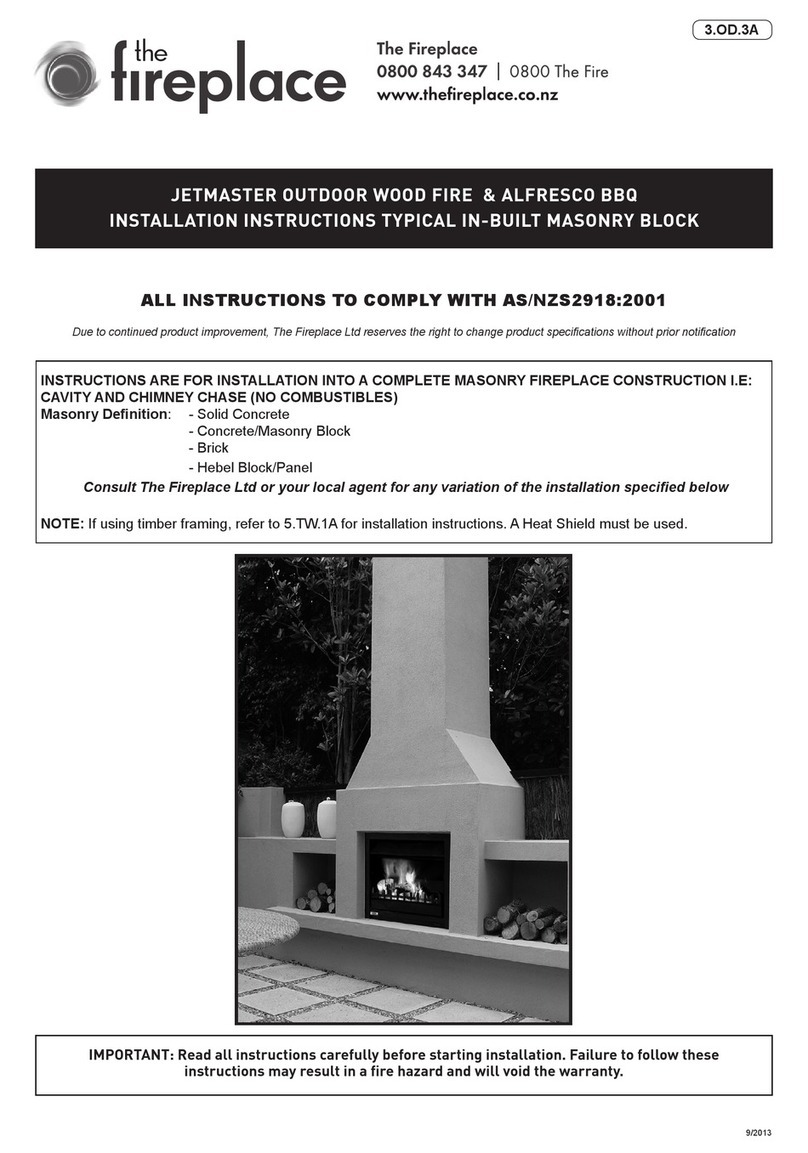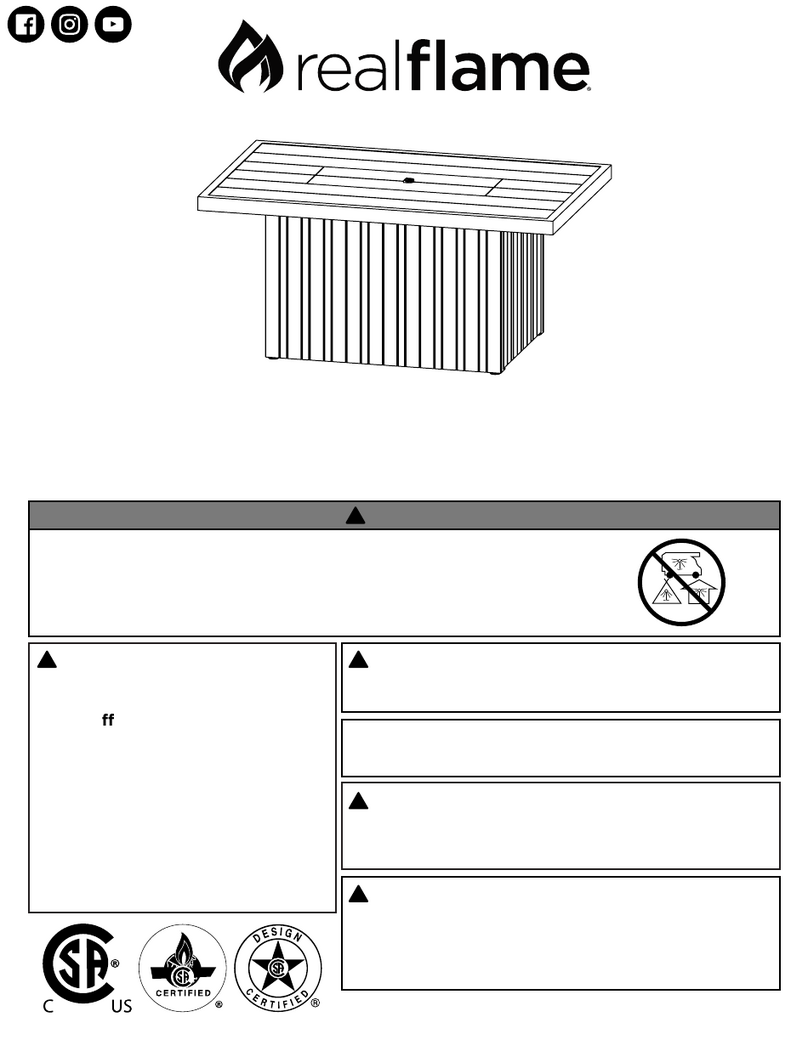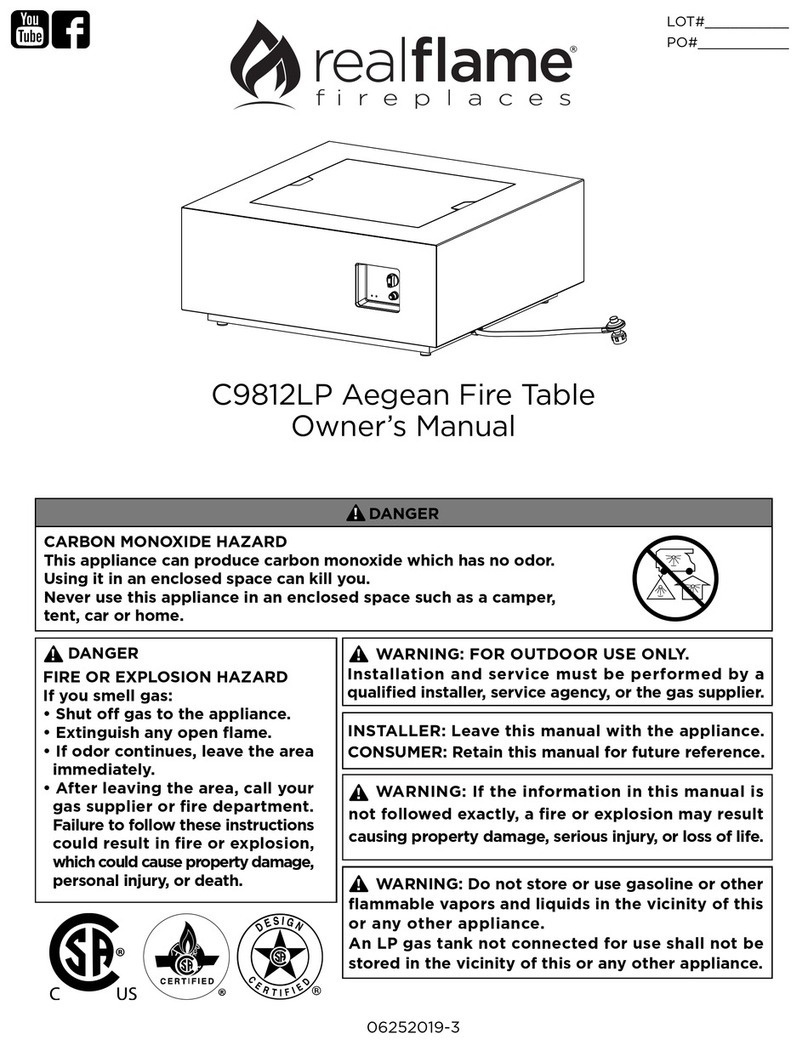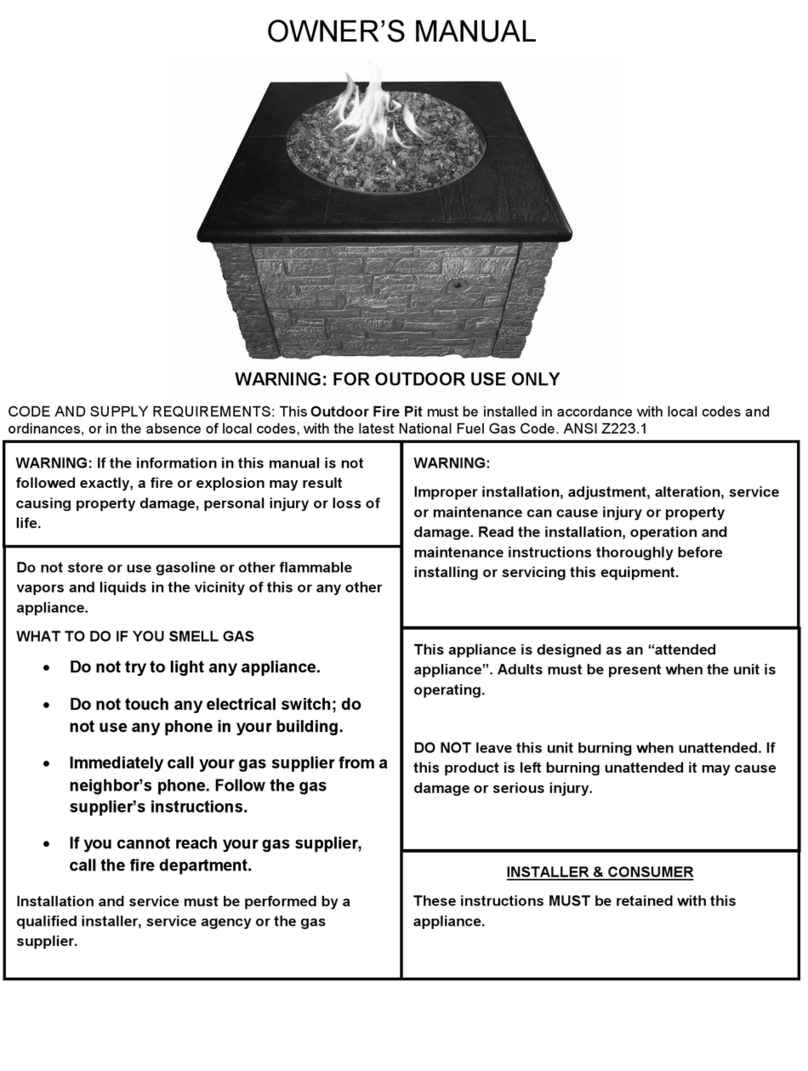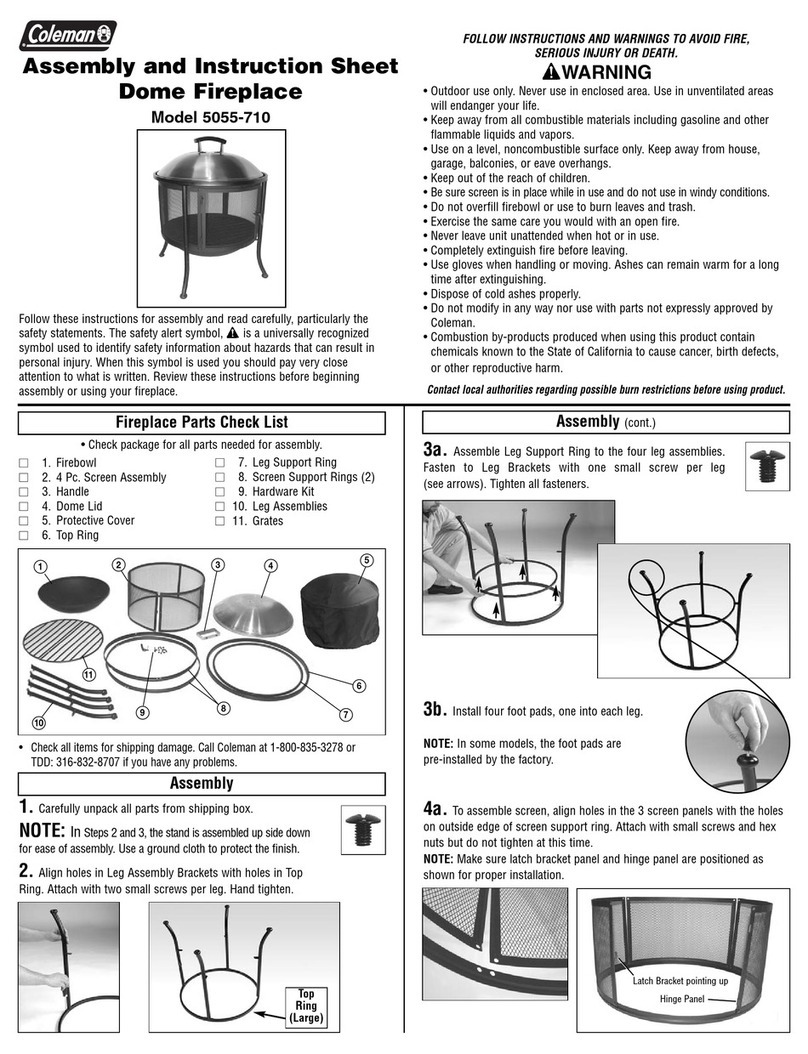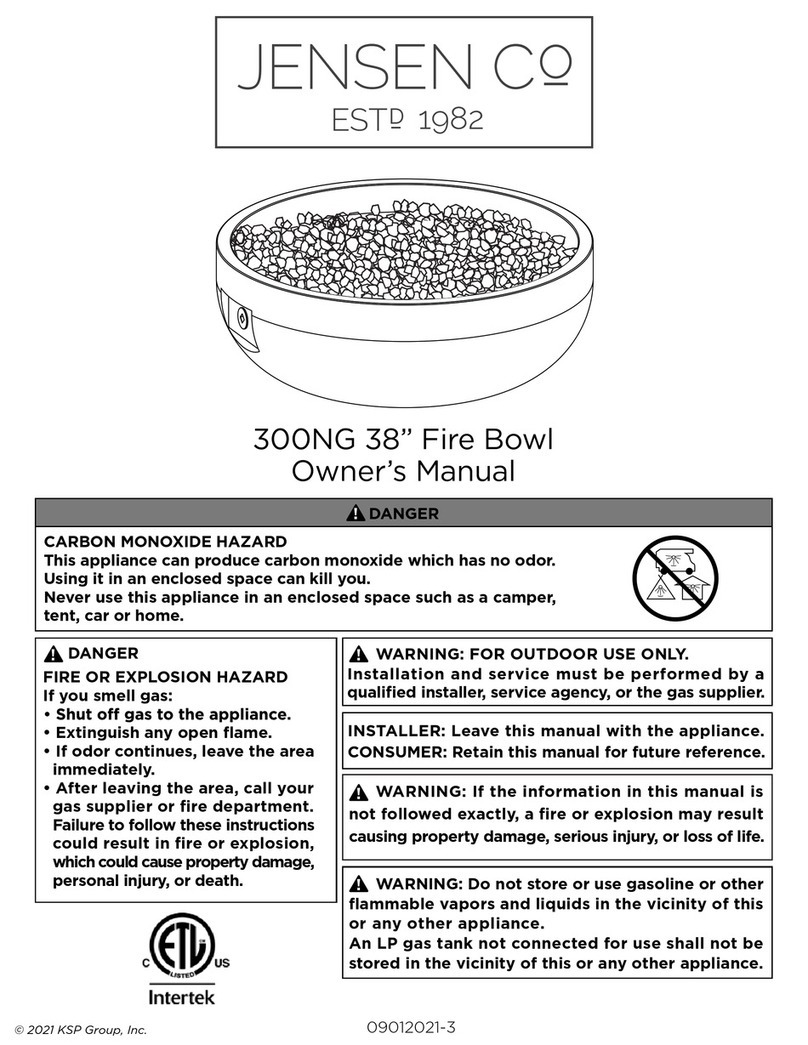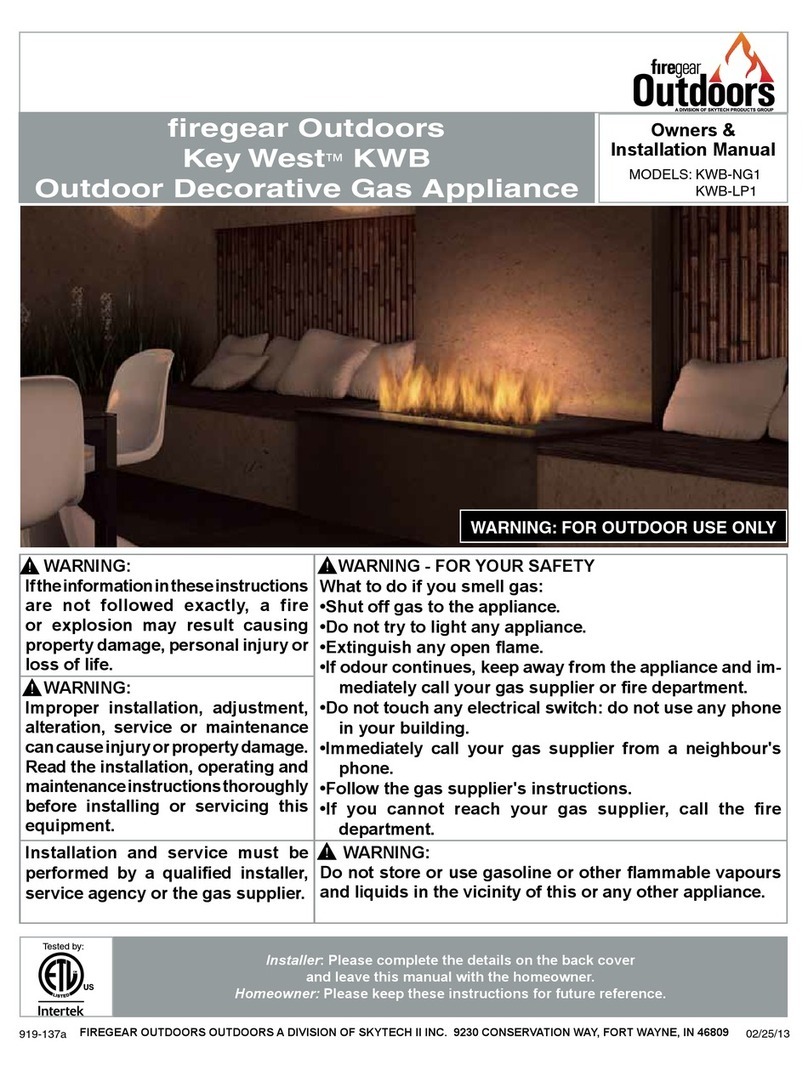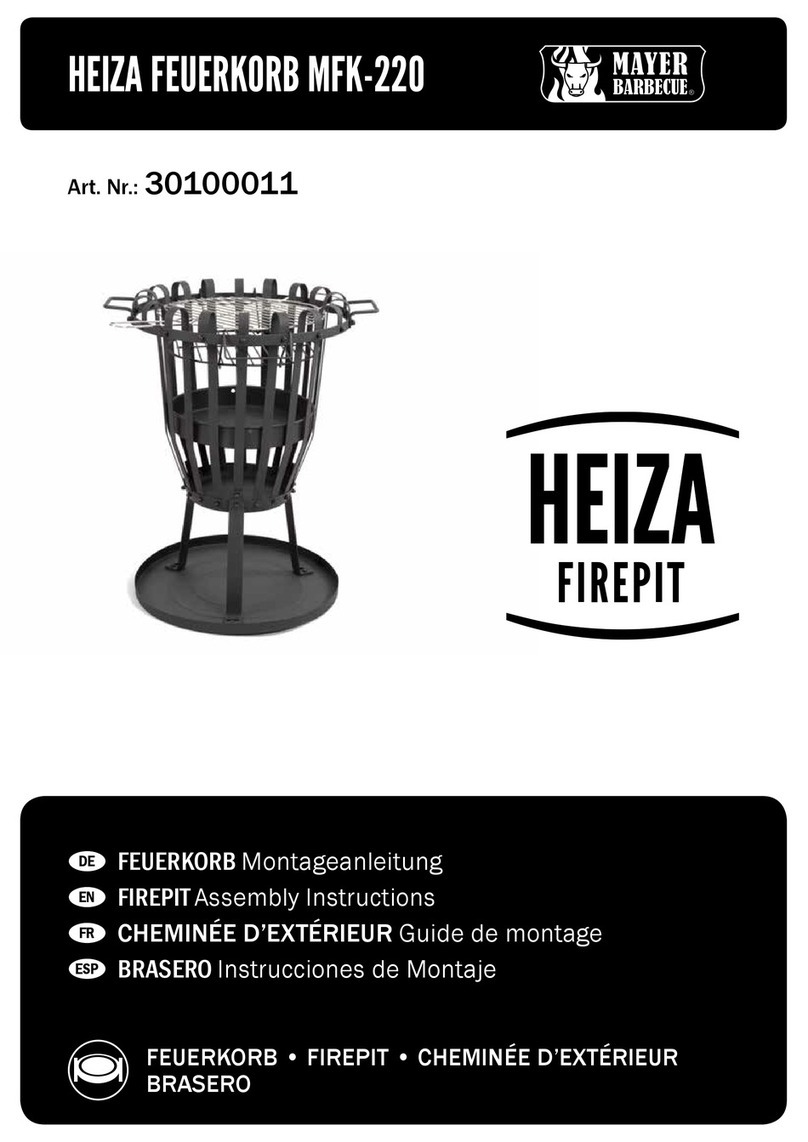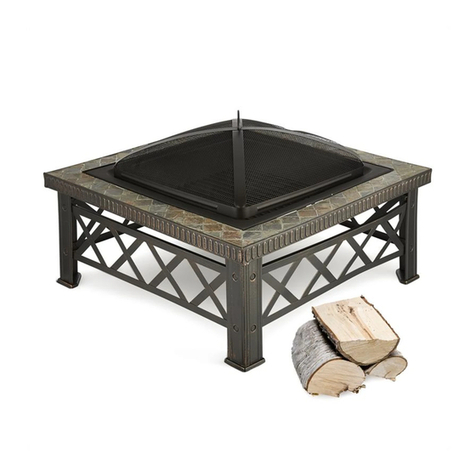
PROPANE (LP) GAS DANGERSAND WARNINGS
!WARNING
LP gas is flammable and hazardous if handled improperly. Become aware of its characteristics before
using any LPgas product. Failure to understand and follow these warnings or any directions and
warnings provided by your LPgas supplier may result inproperty damage, serious injury, or death.
!DANGER
An LPgas tank should never beplaced on its side. Doing somay cause liquid propane to leak.
This could causea fast buildup of LP gas and could lead to property damage, serious injury, or death.
LP Gas Characteristics
• LP gas is flammable, explosive under pressure, heavier than air and settles in pools in low
areas. Pooled gas may ignite causing a fire or explosion which could cause property
damage, serious injury, or death.
• In its natural state, LPgas has no odor. For your safety, a scent has been added.
• Contact withLPgas could burn your skin.
LP Gas Tank Information
• LP gas tanks should be filled only by a certified LPgas dealer.
• Never use an LP gas tank with adamaged body, valve, collar or footing.
• Dented or rusted LP tanks may be hazardous and should be checked by your LP gas supplier.
• The LPgas supply tank must be constructed and marked in accordance with The Specifications
for LP Gas Tanks of The U.S. Department of Transportation (DOT) or The National Standard
of Canada, CAN/CSA-B339, LP Gas Tanks, Spheres and Tubes for The Transportation of
Dangerous Goods; and Commission.
• LP gas tanks must be arranged for vapor withdrawal.
• LP gas tanks must have a listed overfilling prevention device (OPD) and a QCCI or Type I
(CGA810) LP gas tank connection.
• The Standard for
Compressed Gas Cylinder Valve Outlet andInlet Connection, ANSI/CGA-V-1-1977, CSA B96.
•Never attempt to attach this fireplace to the self-contained LP gas system of a camper,
trailer, motor home or house.
• Hand-turn the manual gas control valve on your LPgas tank. Never use tools.If the valve
will not turn by hand, donot try to repair it.Call a certified gas technician.
• The use of force orany attempt at amateur repair may cause a fire or explosion.
LP Gas Tank Storage and Safety
• LP gas tanks must be stored upright and outdoors in a well-ventilated area out of reach of children.
• Never store an LPgas tank in an enclosed area,suchas ashed orgarage. Leaking gas could build
up in these areas and may result inan explosion.
• Do not store LP gas tanks near any source of flame or ignition.
• Never store an LPgas tank indirect sunlight or where temperatures can reach 125°F (51.67°C) or higher.
•Never keep a filled LP gas tank in a hot car orcar trunk.Heat will cause the gas pressure to
increase, which may open the relief valve and allow gas to escape.
• Place the dust cap on the LPgas tank valve outlet when the LP gas is not in use. Only use
the dust cap that is provided with the LP gas tank. Other types of caps orplugs may
result in leakage of LP gas.
• The LPgas tank should not bedropped or handled roughly.
5
